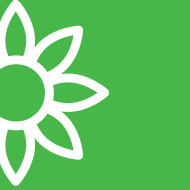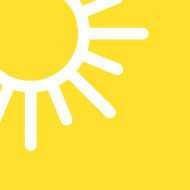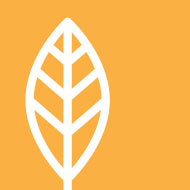Active Seasons




Flesh Fly Appearance and Size Facts
Flesh flies are medium-sized flies known for their distinctive appearance and scavenging behavior. Flesh flies are named for their habit of breeding in decaying flesh or organic matter, making them important for their role in the decomposition cycle. While they can be found in various habitats, they are often associated with dung and compost piles, where they lay their eggs and contribute to the decomposition process.
- Gray and black in color
- Three distinctive stripes on their thorax
- 6 to 13 millimeters in length
- Large reddish eyes
Identifying Flesh Flies From Other Flies
Identifying flesh flies from other types of flies can be done by examining their specific characteristics. Here are some key features to help distinguish flesh flies from other flies:
- Thoracic stripes: Flesh flies have three distinctive longitudinal stripes on their thorax. These stripes are usually gray or black and are a prominent identifying feature.
- Reddish eyes: Flesh flies typically have large, reddish eyes, which is unique from other fly species.
- Size: Flesh flies typically measure between 6 to 13 millimeters in length, larger than many other common species of flies.
- Larval habitat: Flesh fly larvae are known to feed on decaying matter, so finding them in or near such matter can be a strong indicator.
That said, making an identification of a flesh fly can be challenging due to their small size. If you need help determining the type of fly you’re seeing in or around your home, trained pest professionals are a great resource to turn to.
We offer flesh fly control in the following locations and their surrounding areas:

Behavior and Habitat of Flesh Flies
Flesh flies are often found near decaying organic matter, such as animal feces and rotting vegetation. Unlike some other fly species, flesh flies give birth to live maggots rather than laying eggs. This adaptation allows them to deposit their larvae directly onto suitable food sources, giving their offspring an immediate food supply. Flesh flies play a vital role in ecosystems by aiding in the decomposition of organic material but can cause a serious disturbance in homes.

Signs of Infestation of Flesh Flies
Signs of a flesh fly infestation can be worrying, as these flies are often associated with unsanitary conditions and decomposing organic matter. The presence of flesh flies can be identified through frequent sightings, the presence of larvae, a foul odor, or the presence of breeding sites like rotting food or animal feces. Health concerns and unexplained illness are both signs of a flesh fly infestation, as flesh flies are known to carry and transmit disease-causing pathogens. If you notice an infestation, it’s essential to address it promptly to reduce the risk of disease transmission to those in your home.

Tips for Prevention of Flesh Flies
Preventing flesh fly infestations primarily involves maintaining a clean and sanitary environment to discourage breeding and thriving. This includes properly disposing of any waste, ensuring that entry points are sealed, maintaining good personal and pet hygiene, removing any animal remains that come near your property, and cleaning areas like drains and garbage disposals. Along with this, if you compost, use a secure cover to prevent flesh flies from laying eggs in compost piles.
Getting Rid of Flesh Flies
If your home has been infested by flesh flies, try your hand at these tips to get rid of them:
- Start by identifying and removing breeding sites: This involves locating and eliminating the source of the infestation by disposing of any waste that may be attracting the flies.
- Clean thoroughly: Clean any affected areas, paying special attention to places where flies might have laid eggs and using disinfectants to sanitize surfaces.
- Seal entry points: Ensure that all doors, windows, and other potential entry points are sealed to prevent additional flies from entering.
- Use fly traps or baited traps: Employ fly traps specifically designed for flesh flies to capture adult flies and reduce their population.
- Insecticides: Consider using insecticides labeled for fly control. Follow the instructions carefully and apply them in infested areas.
Effective Flesh Fly Control Solutions
If your flesh fly infestation is severe or persistent, even after you’ve employed all the methods of elimination suggested, turn to Hulett Environmental Services for professional flesh fly removal. We offer pest control services of all kinds to help eliminate your pest problems for good. Most importantly, our pest removal processes are pet-friendly and environmentally safe.
Give us a call for more information or schedule your free inspection today to start your journey towards a clean and pest-free space with the help of Hulett Environmental Services!



